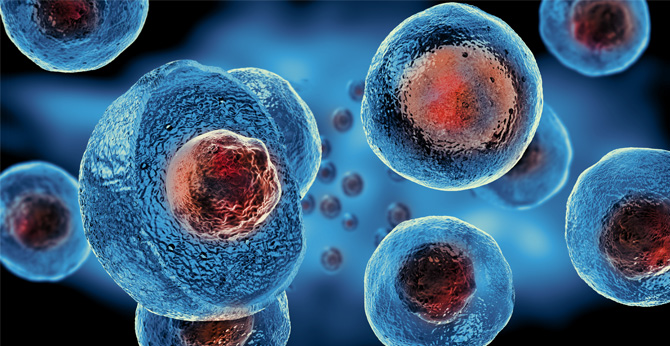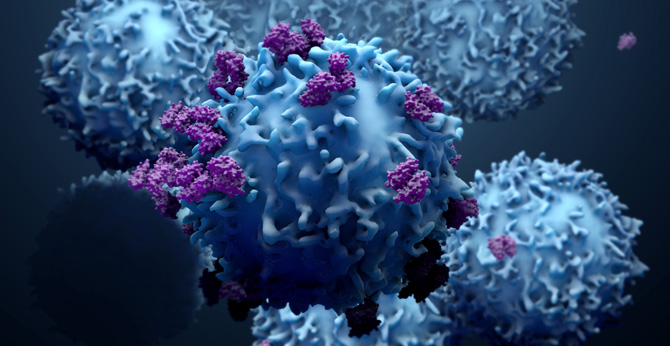All products and services are For Research Use Only and CANNOT be used in the treatment or diagnosis of disease.
Tyrosine-protein kinase transmembrane receptor ROR1, also called neurotrophic tyrosine kinase receptor-related 1 (NTRKR1), belongs to the receptor tyrosine kinase-like orphan receptor (ROR) subfamily. It is a type I membrane protein, which is regulating neurite growth in the central nervous system. ROR1 is playing a functional role in the activity of ovarian cancer cells, and associated with B-cell chronic lymphocytic leukaemia.
 Associated Disease
Associated Disease
 Loading...
Loading...
| CAT | Product Name | Target Species | Antibody Clone | Antibody Host | Receptor Construction | Vector Type | Targeting Cell Type | CAR Vector Type | Inquiry & Datasheet |
| CAR-T-1-M324-2 | Anti-ROR1 scFv h(CD28) CART, pCDCAR1 | Human | 2A2 | Mouse | scFv-CD28 | Lentiviral | T cell | ||
| CAR-T-1-M324-G | Anti-ROR1 scFv h(FcεRIγ) CART, pCDCAR1 | Human | 2A2 | Mouse | scFv-FcεRIγ | Lentiviral | T cell | ||
| CAR-T-1-M324-Z | Anti-ROR1 scFv h(CD3ζ) CART, pCDCAR1 | Human | 2A2 | Mouse | scFv-CD3ζ | Lentiviral | T cell | ||
| CAR-T-2-M324-2G | Anti-ROR1 scFv h(CD28-FcεRIγ) CART, pCDCAR1 | Human | 2A2 | Mouse | scFv-CD28-FcεRIγ | Lentiviral | T cell | ||
| CAR-T-2-M324-2Z | Anti-ROR1 scFv h(CD28-CD3ζ) CART, pCDCAR1 | Human | 2A2 | Mouse | scFv-CD28-CD3ζ | Lentiviral | T cell | ||
| CAR-YF106 | Anti-ROR1 (CBL-YF035) h(4-1BB-CD3ζ) CAR, pCDCAR1 | Human | CBL-YF035 | Human | scFv-4-1BB-CD3ζ | Lentiviral vector | T cell | ||
| CAR-YF107 | Anti-ROR1 (CBL-YF035) h(CD28-CD3ζ) CAR, pCDCAR1 | Human | CBL-YF035 | Human | scFv-CD28-CD3ζ | Lentiviral vector | T cell | ||
| CAR-YF112 | Anti-ROR1 (R11) h(4-1BB-CD3ζ) CAR, pCDCAR1 | Human | R11 | Rabbit | scFv-4-1BB-CD3ζ | Lentiviral vector | T cell | ||
| CAR-YF113 | Anti-ROR1 (R11) h(CD28-CD3ζ) CAR, pCDCAR1 | Human | R11 | Rabbit | scFv-CD28-CD3ζ | Lentiviral vector | T cell | ||
| CAR-ZP091 | Anti-RoR1 (R11) h(41BB-CD3ζ) CAR, pCDCAR1 | Human | R11 | Rabbit | scFv-4-1BB-CD3ζ | Lentiviral vector | T cell | ||
| CAR-SB-LX0411 | Anti-ROR1 (601-3-16) h(CD28-CD3ζ) CAR, pSBCAR1 | Human | 601-3-16 | Human | scFv-CD28-CD3ζ | Sleeping Beauty (SB) transposon | T cell | ||
| CAR-SB-LX0412 | Anti-ROR1 (601-3-12) h(CD28-CD3ζ) CAR, pSBCAR1 | Human | 601-3-12 | Human | scFv-CD28-CD3ζ | Sleeping Beauty (SB) transposon | T cell | ||
| CAR-SB-LX0413 | Anti-ROR1 (V70) h(CD28-CD3ζ) CAR, pSBCAR1 | Human | V70 | Human | scFv-CD28-CD3ζ | Sleeping Beauty (SB) transposon | T cell | ||
| CAR-SB-LX0414 | Anti-ROR1 (EML719) h(CD28-CD3ζ) CAR, pSBCAR1 | Human | EML719 | Human | scFv-CD28-CD3ζ | Sleeping Beauty (SB) transposon | T cell | ||
| CAR-SB-LX0415 | Anti-ROR1 (31C12) h(CD28-CD3ζ) CAR, pSBCAR1 | Human | 31C12 | Mouse | scFv-CD28-CD3ζ | Sleeping Beauty (SB) transposon | T cell | ||
| XS-0823-LX87 | Anti-hROR1 (12) ICD(CD28-OX40-CD3ζ) CAR-MA, pAd5f35 Vector | Human | 12 | Adenoviral vectors |
 NEWSLETTER
NEWSLETTER
The latest newsletter to introduce the latest breaking information, our site updates, field and other scientific news, important events, and insights from industry leaders
LEARN MORE NEWSLETTER NEW SOLUTION
NEW SOLUTION
CellRapeutics™ In Vivo Cell Engineering: One-stop in vivo T/B/NK cell and macrophage engineering services covering vectors construction to function verification.
LEARN MORE SOLUTION NOVEL TECHNOLOGY
NOVEL TECHNOLOGY
Silence™ CAR-T Cell: A novel platform to enhance CAR-T cell immunotherapy by combining RNAi technology to suppress genes that may impede CAR functionality.
LEARN MORE NOVEL TECHNOLOGY NEW SOLUTION
NEW SOLUTION
Canine CAR-T Therapy Development: From early target discovery, CAR design and construction, cell culture, and transfection, to in vitro and in vivo function validation.
LEARN MORE SOLUTION